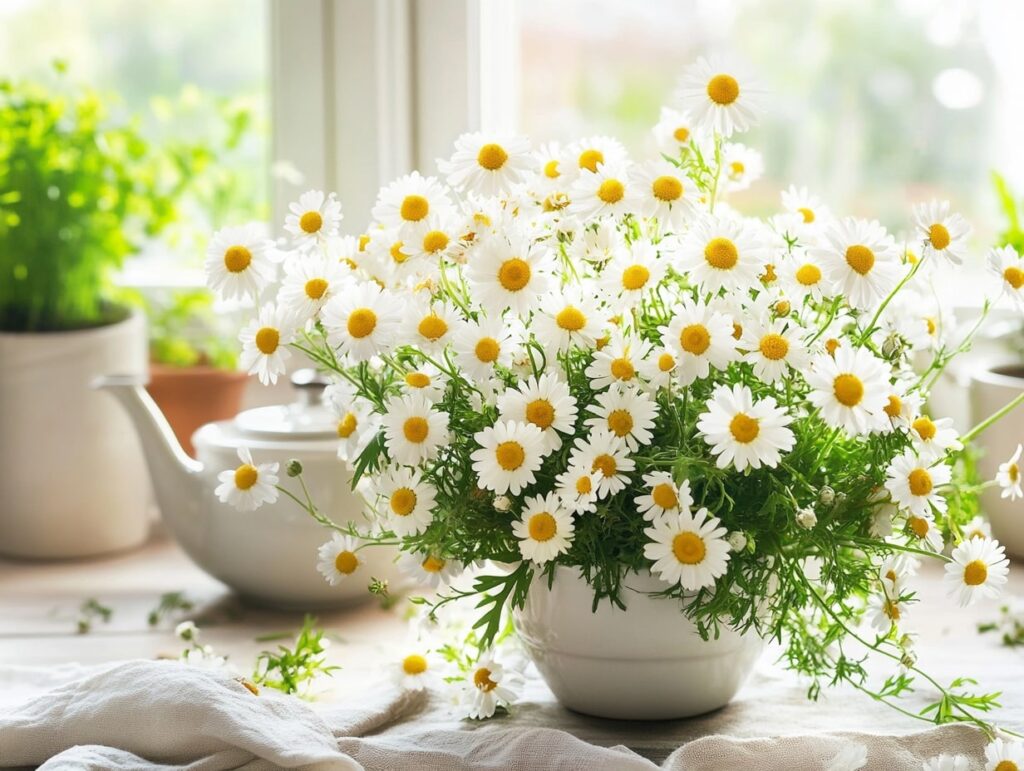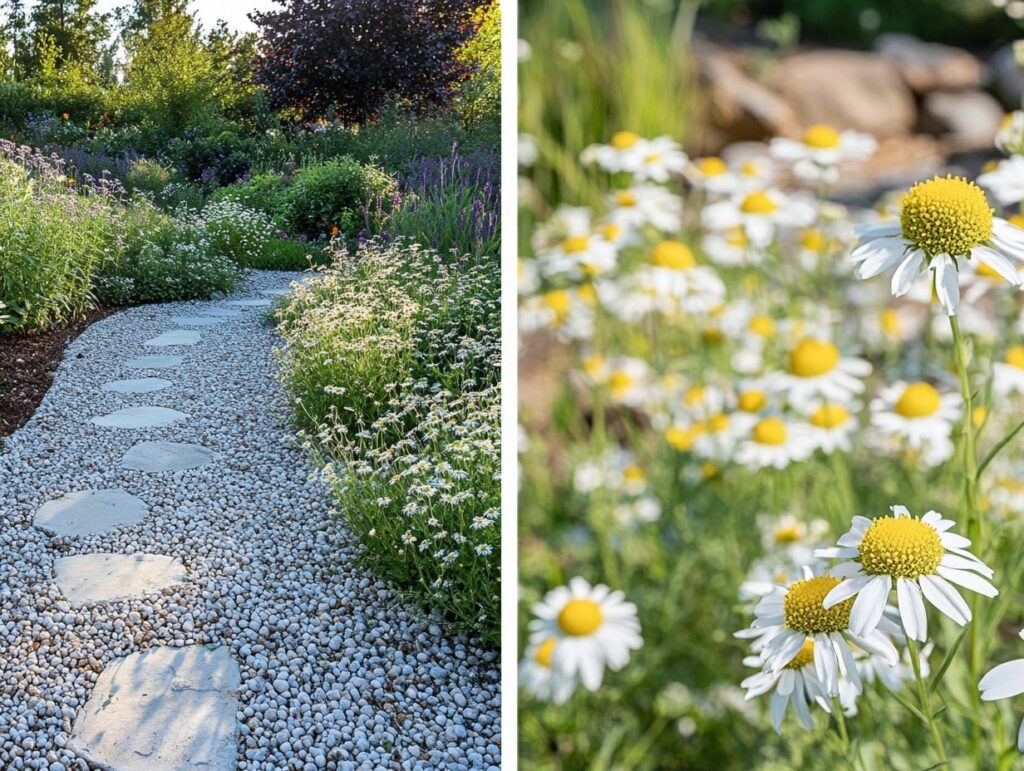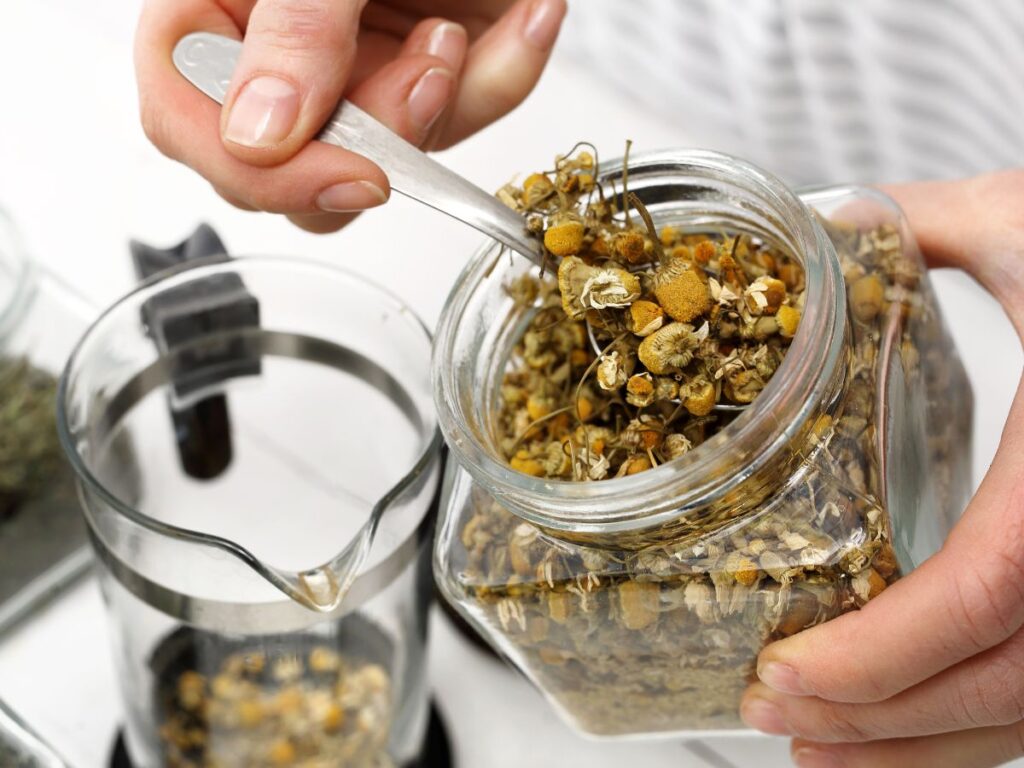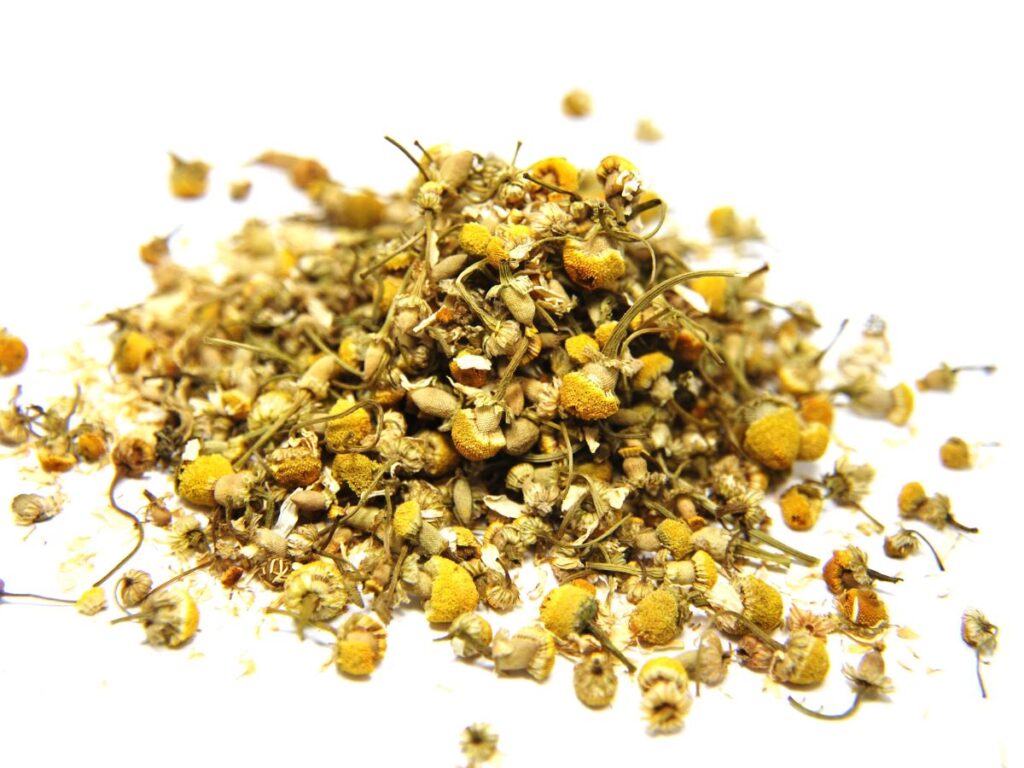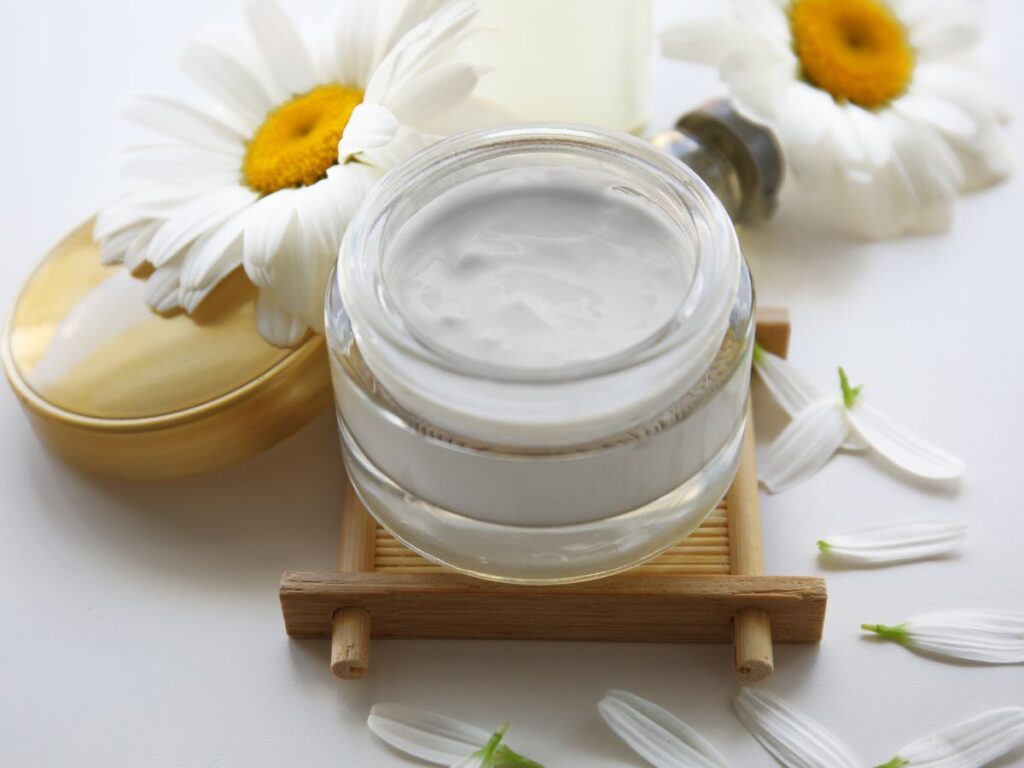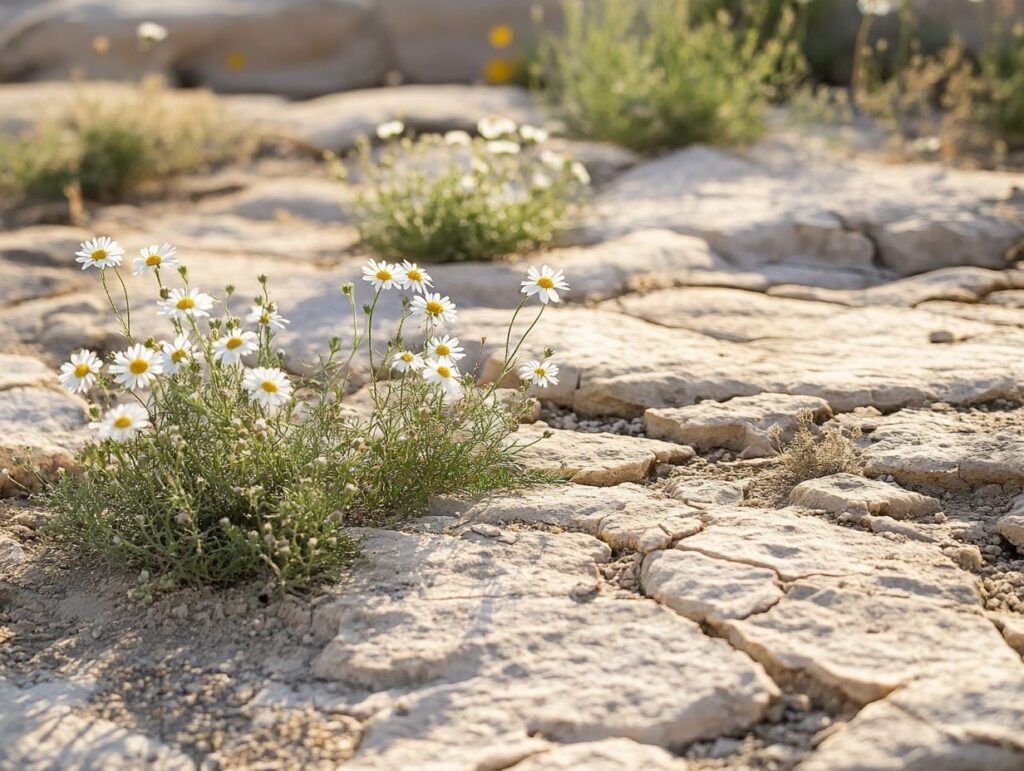Chamomile isn’t just another pretty plant to decorate your garden—it’s a hidden gem with a treasure trove of benefits that every gardener should know about.
Imagine stepping into your backyard, plucking fresh chamomile flowers, and turning them into a soothing cup of tea that melts away the stress of the day. It’s not just a dream; it’s the reality of growing chamomile, and it’s easier than you think.
What if I told you that this delicate, daisy-like flower could transform your garden into a natural pharmacy?
With its calming aroma, medicinal properties, and ability to attract essential pollinators like bees and butterflies, chamomile is much more than just a visual treat. It’s the plant that keeps on giving—relaxation, beauty, and biodiversity all in one.
And the best part? Chamomile is incredibly low-maintenance. Whether you’re a novice gardener or have a green thumb, this resilient plant will thrive with minimal effort.
So, if you’re tired of high-maintenance plants or longing for a garden that’s as beneficial as it is beautiful, chamomile is the answer you’ve been waiting for. Ready to unlock the secrets of this versatile wonder? Let’s dive in.
Let’s Get to Know Chamomile
Growing chamomile offers many benefits, including its calming properties, ease of cultivation, and versatility in various uses. Understanding the types of chamomile and their preferred growing conditions can help you succeed in cultivating this delightful herb.
What Is Chamomile?
Chamomile is a flowering herb that belongs to the Asteraceae family. It’s well-known for its aromatic blooms and therapeutic benefits. You might recognize it from your favorite herbal teas, as it’s often used for its calming effects.
There are two main types: German Chamomile (Matricaria chamomilla) and Roman Chamomile (Chamaemelum nobile). Both types share similar attributes but are used differently, reflecting their unique characteristics.
German chamomile is an annual plant, characterized by taller stature and prolific blooms. It’s commonly used for essential oils and teas. Roman chamomile, on the other hand, is a perennial and acts as a ground cover. It’s often used for its decorative value and pleasant scent.
Varieties of Chamomile
When choosing which chamomile to grow, consider the distinct varieties. German chamomile is popular due to its ability to self-seed and its abundant flowers, which are distilled into oils or dried for tea. It grows about 24 inches tall, making it noticeable in any garden.
Roman chamomile serves as a lovely ground cover, reaching only 4 to 12 inches in height. It’s less prolific in flowering compared to its German cousin but offers lush greenery. Both types bring beauty and utility to your garden.
There are also cultivated varieties bred for specific traits, such as increased aroma or flower size. These options provide flexibility based on your space and goals. Explore all options to find the best fit for your needs and preferences.
Chamomile Growing Conditions
Chamomile thrives in sunny locations with well-drained soil. You’ll find that it’s quite adaptable, making it suitable for various garden spaces. German chamomile tolerates poor soils better and prefers slightly acidic to neutral conditions. Aim for a pH between 5.6 and 7.5.
Roman chamomile appreciates a cooler climate and well-drained sandy soil. It’s more tolerant of shade and copes well with drought. Consistent watering encourages growth, but avoid waterlogging.
Whether in a garden bed or container, chamomile’s resilience and minimal maintenance make it an appealing choice for both beginners and seasoned gardeners alike.
15 reasons why growing chamomile is one of the best gardening decisions
1. Natural Stress Relief
We live in an increasingly fast-paced world, where stress seems to come at us from every direction. Chamomile has been used for centuries as a natural stress reliever, and the benefits are well-documented.
It contains compounds that act as mild sedatives, promoting relaxation and helping to ease anxiety. Having fresh chamomile on hand allows you to brew tea from your own garden when life becomes overwhelming, offering you a simple but effective tool to calm your nerves.
2. A Sleep Aid Without the Side Effects
Struggling with insomnia? Chamomile tea is a time-honored remedy for sleep issues. Unlike synthetic sleep aids, chamomile offers a gentle, natural way to wind down without the grogginess the next morning.
The flowers contain apigenin, an antioxidant that binds to specific receptors in your brain, reducing anxiety and initiating sleep. Growing chamomile means you always have a fresh, natural solution to help you sleep better.
3. Digestive Aid
Chamomile isn’t just good for your mind; it’s excellent for your gut too. For centuries, it’s been used to soothe digestive issues like indigestion, bloating, and irritable bowel syndrome (IBS).
The anti-inflammatory properties of chamomile can help relax the muscles in your intestines, relieving discomfort and promoting healthy digestion.
4. Anti-Inflammatory Benefits
Inflammation is at the root of many chronic diseases, from arthritis to heart disease. Chamomile contains powerful anti-inflammatory compounds like chamazulene and bisabolol, which have been shown to reduce swelling and pain.
Whether you’re dealing with joint pain, sore muscles, or just want to reduce systemic inflammation, chamomile can be a gentle and effective solution.
5. Natural Antioxidant
In the modern world, our bodies are constantly exposed to pollutants and toxins, which can lead to oxidative stress. Chamomile is packed with antioxidants, which help fight off free radicals and protect your cells from damage.
Incorporating chamomile into your daily routine, whether through tea or topical use, can enhance your body’s ability to fend off harmful oxidative stress.
6. Soothes Skin Irritations
Chamomile isn’t just for internal use. It’s a great remedy for skin issues as well. From minor cuts and scrapes to eczema and acne, chamomile’s anti-inflammatory and antimicrobial properties make it an excellent choice for soothing irritated skin.
By making your own chamomile-infused oils or creams, you can harness its natural healing abilities to treat a wide range of skin conditions.
7. Attracts Beneficial Insects
If you’re an organic gardener, you know the value of attracting beneficial insects like ladybugs and bees to your garden. Chamomile is a magnet for these helpful critters. It draws in pollinators while repelling harmful pests, creating a more balanced and healthy garden ecosystem.
8. Repels Harmful Insects
On the flip side, chamomile has natural insecticidal properties that repel common garden pests like aphids and whiteflies. It’s an excellent companion plant for vegetables and other flowers because it helps keep these harmful bugs at bay without the need for toxic chemicals.
9. Easy to Grow
Chamomile is one of those plants that’s incredibly forgiving. It thrives in a variety of conditions, from full sun to partial shade, and doesn’t require much maintenance. Whether you’re an experienced gardener or just getting started, chamomile is a low-maintenance plant that yields high rewards.
10. Versatile in Use
Chamomile isn’t just for tea. Its versatility extends into cooking, beauty products, and even home remedies. You can use chamomile flowers to make tinctures, infusions, oils, salves, soaps and more.
The plant’s flowers are edible and can be used to garnish dishes or flavor desserts. With chamomile, you’re growing more than just a plant; you’re cultivating a resource that has endless applications.
11. Drought-Resistant
If you live in an area with water restrictions or simply want to conserve water, chamomile is a great choice. It’s a drought-resistant plant that doesn’t require frequent watering. Once established, it can thrive in less-than-ideal conditions, making it perfect for the environmentally conscious gardener.
12. Long Harvest Season
Chamomile’s long flowering period means you’ll have access to fresh flowers for several months. This extended harvest season ensures you can enjoy its many benefits throughout spring and summer. Regular harvesting also encourages more blooms, giving you an abundant supply.
13. Great for Companion Planting
Companion planting is a gardening practice where plants are grown together for mutual benefit. Chamomile is a fantastic companion plant because it enhances the flavor and growth of nearby plants like basil, cabbage, and onions. It can also improve soil health by releasing nutrients into the surrounding area.
Chamomile, More Than Just a Pretty Flower
Growing chamomile offers a multitude of benefits that go far beyond its calming aroma and delicate flowers. From supporting mental and physical health to enhancing your garden’s ecosystem, this humble plant is a powerhouse of utility.
Whether you’re new to gardening or a seasoned pro, chamomile’s low-maintenance nature and high reward make it an essential addition to any garden. The versatility and sustainability it offers make it more than just a plant; it’s a solution for better living.


